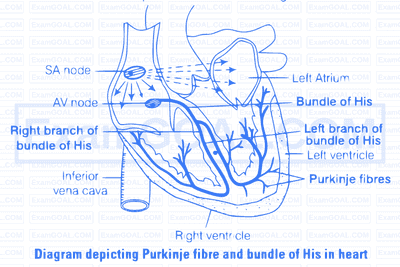Given below are the abnormal conditions related to blood circulation. Name the disorders
(a) Acute chest pain due to failure of $\mathrm{O}_2$ supply to heart muscles
(b) Increased systolic pressure
(a) Angina also called as 'angina pectoris'. It a symptom of acute chest pain that appears when there is no enough oxygen is reaching to the heart muscle. Angina can occur in men and women of any age but it is more common among the middle aged and elder people. It occurs due to condition that affect the blood flow (hypertension etc.)
(b) High Blood Pressure (hypertension) is the term for blood pressure that is higher than normal ( $120 / 80$ ). In this measurement 120 mm Hg is the systolic, or pumping pressure and 80 mm Hg is the diastolic or resting pressure.
Increased systolic pressure, i.e., 140/80 or 150/80, shows hypertension. High blood pressure leads to heart diseases and also affects vital body organs like brain and kidney.
Define the following terms and give their location?
(a) Purkinje fibre
(b) Bundle of His
(a) Purkinje fibres are the impulse conducting fibres which relay the contraction impulses from AV node into the walls of ventricles.
(b) Bundle of His are mass of specialised fibres that originates from the AV node.

State the functions of the following in blood
(a) fibrinogen
(b) globulin
(c) neutrophils
(d) lymphocytes
(a) Fibrinogens are inactive components of blood plasma. Under the action of enzyme thrombin they form a clot or coagulum of a network of threads called fibrin in which dead and damaged elements of blood are trapped.
(b) Globulins are primarily involved in immunity, i.e., defence mechanisms of the body.
(c) Neutrophils are phagocytic cells which destroy foreign organisms entering the body.
(d) Lymphocytes are specialised cells which are responsible for the immune responses in the body. Two major types of lymphocytes, that are involved in this process are B and T-lymphocytes.